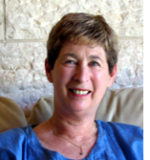By Dorothea Shefer-Vanson

DOMEYROT, France — Whenever I’m in France, usually for a month or two in the summer, I do my best to read and listen to (and speak) French. I listen to the French classical music program on the radio, where there seems to be rather a lot of talking. This usually consists mainly of names of composers and artists, or discussions about them, so I can usually get the gist of what’s being said. When the occasional, very brief news broadcast comes on live, it gets more difficult for me. The announcers speak (or read) at a rapid pace, so I can hardly understand a thing.
This is where the written word comes to my rescue. Every Friday we buy the weekend edition of the national newspaper, Le Figaro, which despite being conservative comes with a plethora of supplements, which provide me with interesting and educational reading for almost a week.
The main section naturally consists mainly of material about French politics, which are somewhat beyond my ken. I dutifully cast my eye over the articles, but find it difficult to grasp the vagaries of the French political system. The articles which interest me the most are to be found in the various supplements.
The supplement which concerns the various French media (TV and films) details all the programs of the week, and rarely contains anything of interest for me (we have no TV in the house). There is a fairly extensive economics supplement, evidently based on the Financial Times, as it too is printed on pink paper. In this, thankfully, I am no longer duty-bound to attempt to interest myself, and so it is with great relief that I allow myself to set it aside unread. The rather brief culture supplement is full of interesting articles, and is a joy to read.
But the one that interests me most is the women’s supplement, which goes under the name of Madame. The telling point here is that it is not called Mademoiselle, and is hence directed at the older woman, i.e., moi. It is in glorious color and is replete with photographs of gorgeous younger and older women displaying fashion, jewelry and makeup, as is only to be expected. But the latter half of the supplement is of greater interest for me, as it contains weightier articles on subjects that are of a more general nature.
Thus, there are several pages devoted to recommendations for various categories of books to read over the summer. Last week’s edition contained an article about how to treat adolescents in the family during the long summer holiday. This seems to consist of fairly obvious advice about being relaxed about dealing with them, and starting to gear up towards the approaching school year as the holiday starts coming to an end.
Another article which aroused my interest was one entitled “The Revolt of the Invisibles,” and was about the double ageist and sexist discrimination against older women in Hollywood. Using the term “quinquas” (“over 50s”) to define actresses of a certain age, the article describes the difficulty they encounter in finding employment in the film industry, and in Hollywood especially. I was intrigued to learn that there is a Center for the Study of Women on TV and in films at San Diego State University, and that it recently published a study called “It’s a Man’s (Celluloid) World.” Amongst other things, the study showed that the representation of men over 50 years of age in films and TV far outweighs that of women.
Some older women in Hollywood have formed an organization to try to help their peers create and find suitable roles in the film industry. There is even a special section at this year’s Cannes film festival entitled “Women in Motion,” devoted to the subject.
Dorothea Shefer-Vanson is an author and freelance writer residing in the Jerusalem suburb of Mevasseret Zion, Israel. She may be contacted via dorothea.shefer@sdjewishworld.com